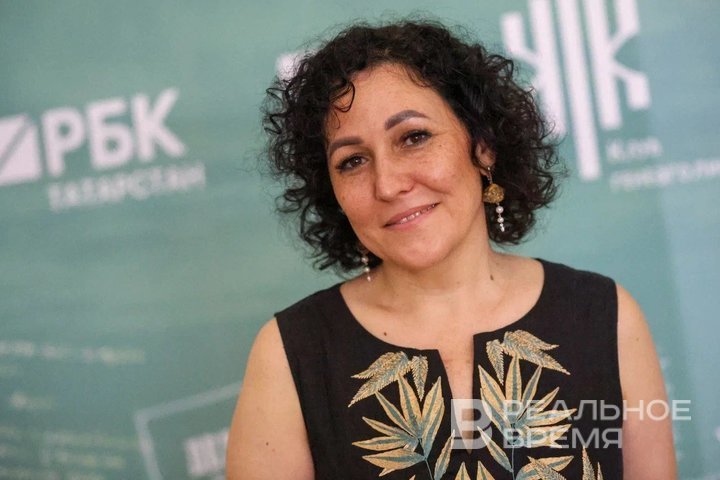Chingiz Aitmatov’s Kazan roots and gaps in iske imla: how residents of Tatarstan look for their ancestors
More than 50 experts arrived in Kazan to explain how and why to research one’s genealogy

In recent years, residents of Russia have shown growing interest in discovering their roots, and Tatarstan is no exception, experts unanimously agree. However, establishing a connection between generations is often hindered by a number of challenges. In particular, before the revolution, Tatars used not Cyrillic but Arabic script, making historical documents inaccessible to the average reader. Yet, diligent descendants still manage to build family trees going back seven generations or even further. The All-Russian Genealogical Forum Terra.Tatarstan provided guidance on how to achieve this.
“Genealogy is researched to mention ancestors in prayers”
On 12–13 June, the Terra.Tatarstan forum was held in Kazan for the third time, and for the first time with all-Russian status. “So the topics are much broader, and different archives are represented — including those from Moscow and St Petersburg,” one of the event organisers, designer and family history advocate Svetlana Agapova, told Realnoe Vremya.
Experts from around ten regions of Russia, ranging from the capital to Krasnodar and Yekaterinburg, shared their experience with those wishing to restore their family histories. In total, 53 speakers took the stage over two days. About 600 people came to listen to the specialists.
“We have been growing year by year. The first forum had 250 registered participants, the second around 350. Now people are gradually getting to know us and coming. A brand has been established in Russia’s genealogical community,” says Svetlana Agapova.

She herself creates courses on book layout and family tree compilation. Her students’ work was exhibited at the forum’s special exhibition, When Trees Were Large. For example, the Aksakov family managed to trace their genealogy back to 1746, and the Ossovsky family to 1615.
Over the past five years, interest in the history of ancestors has increased, senior researcher at the genealogical centre Seven Generations Marsel Gayfullov told our publication. According to his observations, residents of the eastern part of Tatarstan are the most active in tracing their roots. The reasons given vary widely.
“If they are Muslims, they research their genealogy to mention their ancestors in prayers. This is one of the common reasons. The second is simply a love for their lineage, a sense of historical memory. The third is the desire to pass down the family heritage to the younger generation, to their children and grandchildren. Some people begin their research with the Great Patriotic War, focusing on the heroic deeds of their ancestors. From there, interest often extends to the First World War, as many ancestors participated in that conflict as well. And then people continue further, step by step,” he explained.

“Even if a person goes to the archive, they will not be able to glean anything from this data”
However, achieving such results can be difficult. All the experts interviewed agreed that one of the main problems for residents of our republic is connected to the reforms of Tatar script in the 20th century. “Even with great desire, if a person goes to the archive, they will not be able to glean anything from this data,” states Marsel Gayfullov. The fact is that before the revolution, Tatars used Arabic script. Then the language was first switched to Latin script, and later to Cyrillic. As a result, old documents are incomprehensible today.
“I have encountered this myself,” admitted Svetlana Agapova. “You need to know linguists, translators, a community that can help. There are many good people willing to get involved.”
For example, the project Familio has a special chat dedicated to iskele imla — the Arabic script used by Tatars until the 1920s. “We can upload a sample of a document there, and the team quickly translates it. This is very supportive,” the forum co-organiser explained.
This topic was also addressed during the open discussion “Guardians of Tatarstan’s History”. Elvira Minnegaleeva, head of the Information Resources and Public Services Department at the Republic’s Cabinet Registry Office, assured attendees that she is proficient in iske imla. “There are a couple more heads of Registry Office departments who, like me, graduated from the Faculty of Oriental Studies and can also read [Old Tatar]. Everyone can read Latin script; there is nothing difficult about it,” the speaker stated.
How Chingiz Aitmatov is connected to the Utyamyshev family
Overall, the forum programme focused on the key challenges faced both by those just beginning to compile their family trees and by experienced genealogists. The first sessions explained where to start when searching for ancestors and relatives, the role of family nicknames in the search, and even how to “avoid going broke researching your genealogy.” There were also specialised, focused topics: how to trace merchant ancestors, use overseers’ documents on serfs, and study the history of ancestral village homes.
Svetlana Agapova emphasised that the forum is supported by representatives of the academic community, including the Marjani Institute of History of the Academy of Sciences of Tatarstan. “Whatever topics we raise, we cannot do without scientific support. We must rely on fundamental knowledge,” she asserted.
There were also genealogical discoveries. Elmira Amerkhanova, deputy director of the Scientific Library at Kazan Federal University, revealed that the archives hold manuscripts containing shezhere — genealogical records common among Turkic peoples. In particular, there is a family tree of the Utyamyshev family — a well-known Tatar lineage of industrialists, merchants, and philanthropists. Library staff discovered that the writer Chingiz Aitmatov belonged to this family on his maternal side. “This shezhere was beautifully scanned, reproduced, and presented at the level of the Kyrgyz government,” Elmira Amerkhanova concluded.
